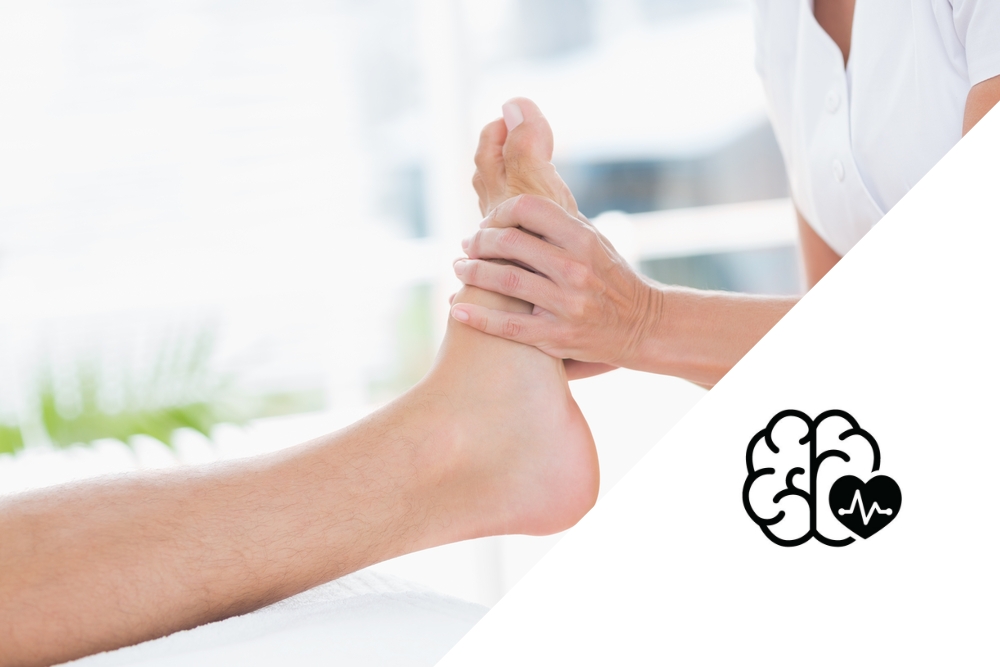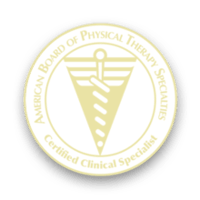Is it really foot drop (also called drop foot)? If you have an upper motor neuron lesion (damage to your brain or spinal cord), drop foot may NOT be the best term to describe your symptoms. Yes, your foot points down and you can’t dorsiflex (lift the foot up) your ankle. That being said, spasticity might be a better term to describe these symptoms. Spasticity causes muscles to stay contracted and interfere with normal movement. The majority of the people (who have an upper motor neuron lesion) are using the WRONG term.
Understanding the difference (foot drop versus spasticity) is CRITICAL to help you get to the right information for the problems you are having with your walking and your balance.
Do you really have foot drop?
Foot drop is when muscles that lift the foot are weak, and so the foot goes down. However, passively, (if it is a true foot drop) you can easily dorsiflex the ankle and bring that foot up.
Is spasticity causing your foot to point down?
If the foot feels stuck pointed down, foot drop is not the problem. In this case, high tone or spasticity (in their gastrocnemius, soleus, and their posterior tibialis) IS the problem. These are the muscles on the back of the ankle, and this is actually the more problematic area. The MAIN reason you can’t lift the foot, is due to spasticity or high tone in the muscles that point the foot down and turn the foot in or invert the foot.
Foot drop and spasticity are NOT treated the same
So, why does this matter? Ever played tug-of-war? That is what is going on when you try and lift the foot and you have spasticity. You can’t address the ankle weakness in the dorsiflexors, until you address the spasticity in the plantar flexors. If you do, you are fighting a losing battle. Let me explain.
Bracing (Ankle Foot Orthosis)
Bracing will be very different. If you have a true drop foot and you do NOT have spasticity in the muscles that point the foot down then you could benefit from a very minimal brace that just lifts the foot up. The brace does not need to control involuntary foot or ankle movement.
On the other hand, with spasticity, walking causes the plantar flexors to go into a strong contraction when the foot hits the ground. This must be controlled with a very rigid brace to STOP plantar flexion and inversion. The brace should also bend at the ankle to allow adequate dorsiflexion at midstance (when the body is directly over the involved leg). This will help keep the knee from locking out and allow the body to move forward from midstance to terminal stance.
Movement Recovery Training
Movement recovery will also be different. For example, a therapist may use a quick stretch technique to activate the ankle dorsiflexors. If you did this same thing with spasticity, it would cause MORE pointing. You could benefit from, what we call, functional electrical stimulation units which provide stimulation to the muscles that lift the foot up. You could benefit from a functional electrical stimulation unit. However, if you have spasticity, these strategies might make the contractions STRONGER and more sustained.
Stretching is also going to be a little bit different. There’s something with spasticity where groups of muscles actually work together. One muscle group that usually works with the plantar flexors are the muscles that extend the knee (the quadriceps). Therefore, stretching should stare with the knee bent.
Work LESS for walking SUCCESS
I know it’s frustrating not to be able to lift your foot up, and everything in you says to just go online and just look for exercises that will help you relearn how to lift the foot up. However, with high tone it is very hard to activate, or get those muscles that lift the foot up, if you have all this resistance from the muscles that point the foot down.
Now, I know you want to get your balance back, and you want to get your walking back. So, what in the world are you supposed to do? Forget the squats. Forget about “gait training” (temporarily). Static position holds such as standing and sitting in a flexed position are the best “exercise” that you can do for spasticity in the foot and ankle. We call that weight-bearing and weight-bearing help to decrease spasticity. Weight-bearing on that leg will actually help to inhibit those overactive muscles in the back of your lower leg.
Here is a GREAT video to help get you started with this critical first step. Do this and I promise it will pay off ten-fold down the road.
I cannot stress this enough, in all your searches and in everything you’re looking at online I want you to keep in mind the difference between foot drop and spasticity, and make sure that you’re doing the best that you can for your specific problem to achieve your highest mobility goal. For a lot of you, that is independence, that is confidence with balance, and that is walking.






What’s the difference between foot drop and ankle spasticity? I have a weak anterior tibialis muscle and am confused with the terms .
My brother has spasticity due to a TBI. When he moved in with me his foot was I n an extreme curled position. He is only spastic on one side so I can stand him up on one leg but then it puts pressure on the other foot with the curled toes. I am worried that without standing he will continue to deteriorate but I feel like I’m hitting a brick wall and it doesn’t seem like his doctors understand the things that go along with his brain injury. Is there anything we can do? Or is it pass the point of fixing?
Hi Tara. About a year after a meniscus surgery in 2012 i developed “foot drop”. That was my pt diagnosis. Over the years i have spent months in PT with no improvement. I am in
reasonable shape i walk daily and play tennis and cycle indoors. Walking and tennis are difficult because i cannot get my ankle to flex. I have tried all latest foot drop exersizes and strectches on youtube videos with no success. I tried a afo that hook to my shoe eyelets and stopped when my knee started to hurt.
My anterior tibalus is noticeably smaller on my affected side. My foot points down and feels heavy when i walk and try to flex my ankle. By your definition i think i have spasitcity rather foot drop. Is there a type of brace that would aid my movement. Thanks bill
Left ankle is radially shifted towards right by about 15 degree, Can’t move toes or ankle
I have had spasticity since my stroke. 10 years ago.
I am very active . I do zumba, yoga, muscle toning at the gym.
Thanks for this video.
I Will try these exercises for sure.